What Is The Real Story With Bitcoin
Executive Summary
- Bitcoin is a very unusual new method of storying value and transacting.
- This article attempts to get to the bottom line around Bitcoin.
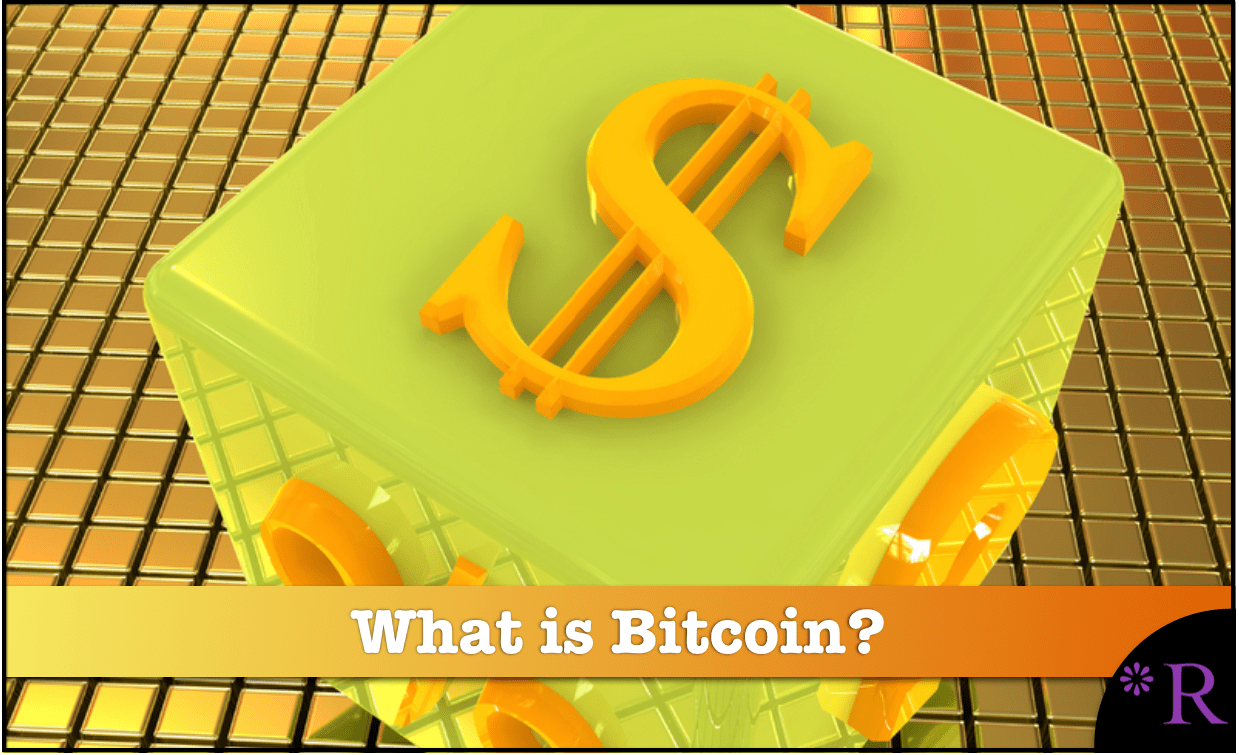
Introduction
This article is designed to try to figure out Bitcoin.
Our References for This Article
If you want to see our references for this article and other related Non Status Quo articles, see this link.
The Current State of Affairs
Bitcoin has increased dramatically recently.
Another concerning feature has been the run-up in Bitcoin.
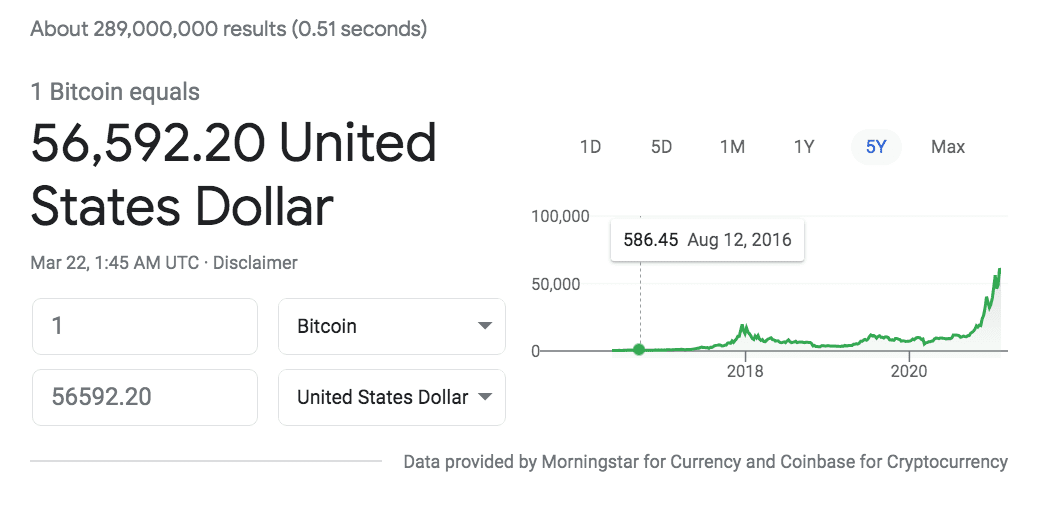
Bitcoin is an alternative currency. In this way, Bitcoin is a bit like gold, in that investments in Bitcoin are partially driven by a lack of confidence in the currency.
This is the video that made me pause and spend some time on this issue. Max Kaiser makes the undeniable argument that the US money supply has been taken control of by a cabal of banking interests. Wealthy entities receive their money from the Fed at 0% interest, while normal people have to borrow at standard interest rates. Things like quantitative easing push bad bank assets on the government’s books, and this is entire without oversight. These elites are parasitizing the US money system.
Nigerians Love Bitcoin
Bitcoin is very popular in Nigeria — and where currencies are weak and unstable, alternatives become popular. The following describes the use of Bitcoin in Nigeria.
African nations have the optimum conditions needed for crypto to flourish: weak local currencies, which make it harder to get the dollars needed for global trade; complex and costly money transfers, and—perhaps most importantly—an enthusiastic, youthful, tech-savvy and increasingly desperate population.
Sawyerr, who was raised in Nigeria, explained that sub-Saharan Africa is the most expensive place to move money into. Now, the tumbling price of the country’s oil—a direct result of the coronavirus pandemic—has wrought economic strife, and led to two devaluations of the Nigerian Naira. In November 2020, the nation officially went into recession for the second time in five years.
“Nigeria’s weakening Naira currency, as well as the shortage of US dollars, are forcing businesses to switch to Bitcoin as the means of settling payments for international transactions,” Amos Samson, Nigeria manager at remittance service Sirocco Pay, confirmed to Decrypt.
The situation is so dire that, according to Nigeria’s leading financial publication BusinessDay, some of the country’s Bureaux De Change (BDCs)—popular destinations for foreign currency exchange—have attempted to educate their customers about the use of Bitcoin, because they’ve been unable to meet the high demand for dollars. Their efforts are now reportedly bearing fruit, with plenty of businesses switching to Bitcoin for international trade.
Chinese suppliers, in particular, are keen to do business in Bitcoin for its speed and convenience. It also means Nigerian businesses no longer need to buy dollars using Naira or shell out fees to money-transfer firms.
Nwachukwu points out that interest in cryptocurrency has grown fastest among millennials. Nigeria’s young, entrepreneurially-minded population has contributed to its success as Africa’s leading startup investment destination in 2018.
Many Nigerians have shunned doing business online in recent years due to the preponderance of social-financial, get-rich-quick and Ponzi schemes, such as MMM, Twinkas and others, according to Luka Anthony, overseas manager for Chinese financial services startup GetBit. The scams have tainted the image of cryptocurrencies in the country, he argued—but recent events have given Bitcoin a shot of credibility.
The police unit stands accused of extortion, torture and murder. Many of those targeted are young males who work in the tech industry. Yele Bademosi, CEO of Binance-backed payments app Bundle, recently shared his own chilling encounter with SARS.
some groups of local activists, like the Feminist Coalition, had their bank accounts frozen. In desperation, they turned to Bitcoin. Donations poured in, and Jack Dorsey even promoted the cause on Twitter. Ultimately, the group ended up raising over $150,000 in Bitcoin—more than 40% of their total funds.
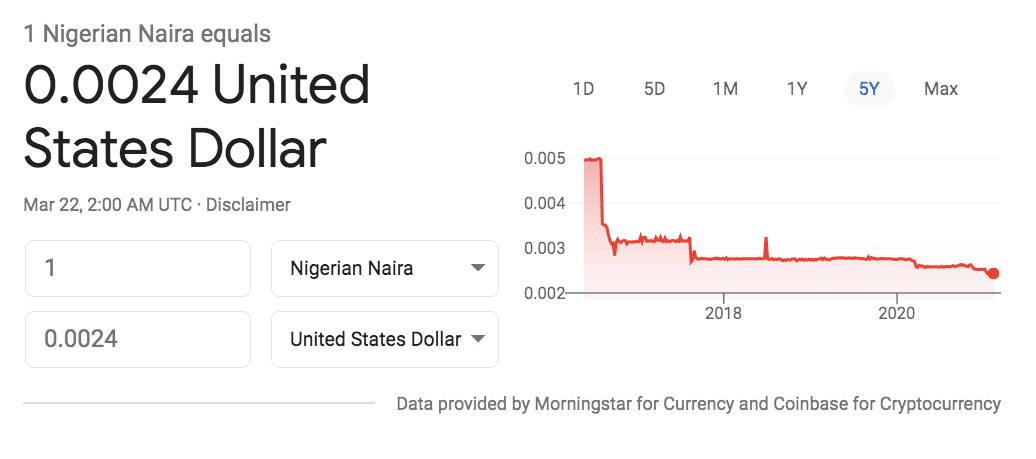
Notice the decline of the Nigerian Naira since 2016. It has dropped in half. Inflation is currently running around 16.5% in Nigeria. This would often lead to US dollars being used, but now Bitcoin and other cryptocurrencies are viewed as an alternative.
This issue of banks’ problems in the less developed world is why it is sometimes predicted that Bitcoin will be more important in these areas because Bitcoin is better than the alternatives, which are the banks in those countries.
This video does a good job of explaining Bitcoin. However, at the 4:32 mark, Amy states that Bitcoin needs to be “digitally mined” using algorithms. And that after the mining was complete, the max quantity of Bitcoin would be reached. This made absolutely no sense to me. And in fact, this was the part of the video when I burst out laughing.
Mining is explained in the following quotation.
Much of the energy use comes from the process that’s commonly referred to as “mining” Bitcoin. This is when computers known as mining machines, which are connected to the crypto-currency network, verify transactions made by people who send or receive Bitcoin. The process prevents fraudulent editing to the transaction records, and miners are in turn paid small amounts of Bitcoin for operating this system. However, in an effort to maximize profits, people have connected large groups of miners to the network, and since this means miners are essentially working non-stop, the electricity used is quite large. – MSN
Even if the claim were true in the video regarding miners ultimately running into a constraint on new Bitcoin — one could simply startup “Bitcoin Part Deux” or some other cryptocurrency and start the process all over again. This is explained in the following quotation.
“Further contributing to unstable valuations is the speed at which new
cryptocurrencies – all tending to be very closely substitutable with one another –
come into existence. At the time of writing, several thousand existed, though
proliferation makes reliable estimates of the number of outstanding cryptocurrencies impossible (Graph V.6, right-hand panel). Recalling the private banking experiences of the past, the outcome of such liberal issuance of new moneys is rarely stability.” – BIS
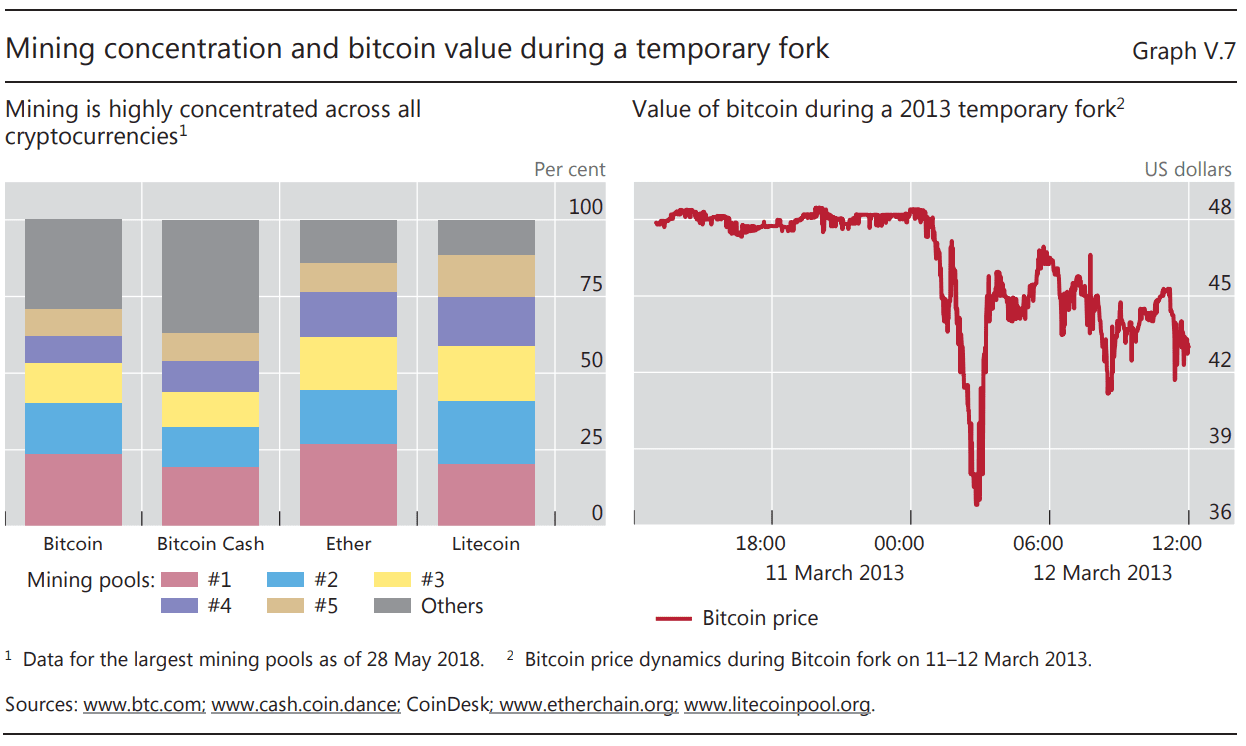
This graphic shows what happened when there was a fork with Bitcoin.
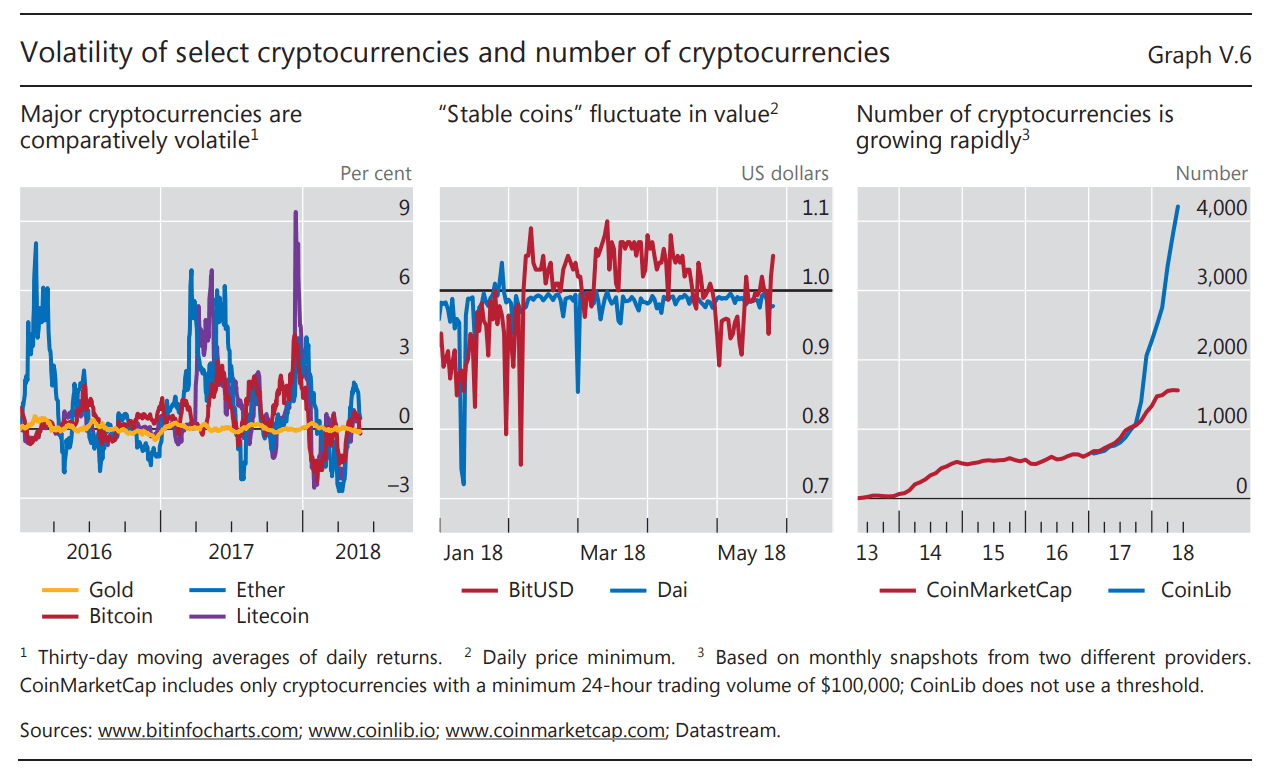
This graphic shows the growth of other cryptocurrencies.
This woman in the video above is going a good job of explaining how Bitcoin works — however, I don’t think she is stopping to question whether what she is saying makes sense.
How Bitcoin mining is performed is explained in this quotation.
The successful miner finding the new block is allowed by the rest of the network to reward themselves with newly created bitcoins and transaction fees.[116] As of 11 May 2020,[117] the reward amounted to 6.25 newly created bitcoins per block added to the blockchain,[118] plus any transaction fees from payments processed by the block. To mine half of the supply of bitcoins took four years but the remainder will take another 120 years, because of an artificial process called “bitcoin halving” according to which miners are compensated by fewer BTC as time goes on.[118] To claim the reward, a special transaction called a coinbase is included with the processed payments. – Wikipedia
The idea behind Bitcoin is enticing. A currency that no government controls. The decentralized nature of Bitcoin is explained in the following quotation.
“Bitcoin does not have a central authority.[7] There is no central server; the bitcoin network is peer-to-peer.[14] There is no central storage; the bitcoin ledger is distributed.[142] The ledger is public; anybody can store it on their computer.[6]:ch. 1
There is no single administrator;[7] the ledger is maintained by a network of equally privileged miners.[6]:ch. 1
Anybody can become a miner.[6]:ch. 1
The additions to the ledger are maintained through competition. Until a new block is added to the ledger, it is not known which miner will create the block.[6]:ch. 1
The issuance of bitcoins is decentralized. They are issued as a reward for the creation of a new block.[116] Anybody can create a new bitcoin address (a bitcoin counterpart of a bank account) without needing any approval.[6]:ch. 1
Anybody can send a transaction to the network without needing any approval; the network merely confirms that the transaction is legitimate.[143]:32” – Wikipedia
However, the mechanisms of Bitcoin do not make any sense to me. It is important to not confuse or comingle the goal (a government independent currency) with the validity of the mechanism. If the mechanism does not make sense or has a very low probability of working or being true, no matter how alluring the goal, it won’t make any difference.
This was the critical error in analyzing Theranos. The investors and media confused the goal (100 tests from one drop of blood and an end to extensive blood draws for critically ill patients) with whether Theranos’ claim regarding blood analysis was accurate. As a college dropout with one semester of chemistry, Theranos CEO Elizabeth Holmes was never going to be the person who figured out something that no one else figured out. Elizabeth Holmes was a terrible scientist but an excellent salesperson. Elizabeth Holmes was an exemplar of the Dunning Kreuger Effect, she did not know enough about chemistry or blood testing to see how impossible her idea was as I cover in the article The Similarities Between Thomas Edison, Elizabeth Holmes, and Hasso Plattner.
Elizbeth Holmes was able to convince the establishment media as well as many investors who knew less than Holmes did about chemistry and blood testing. They seemed to focus on things like her hypnotic eyes and black turtlenecks, and more than anything their false but appealing claims. They also spent no time investigating whether the claims were possible.
The Philosophical Motivations for Bitcoin
This is explained in the following quotation.
According to The New York Times, libertarians and anarchists were attracted to the philosophical idea behind bitcoin. Early bitcoin supporter Roger Ver said: “At first, almost everyone who got involved did so for philosophical reasons. We saw bitcoin as a great idea, as a way to separate money from the state.”[155] The Economist describes bitcoin as “a techno-anarchist project to create an online version of cash, a way for people to transact without the possibility of interference from malicious governments or banks”.[158] Economist Paul Krugman argues that cryptocurrencies like bitcoin are “something of a cult” based in “paranoid fantasies” of government power.[159] – Wikipedia
Fiat currencies indeed have a long-term history of being subject to inflation.
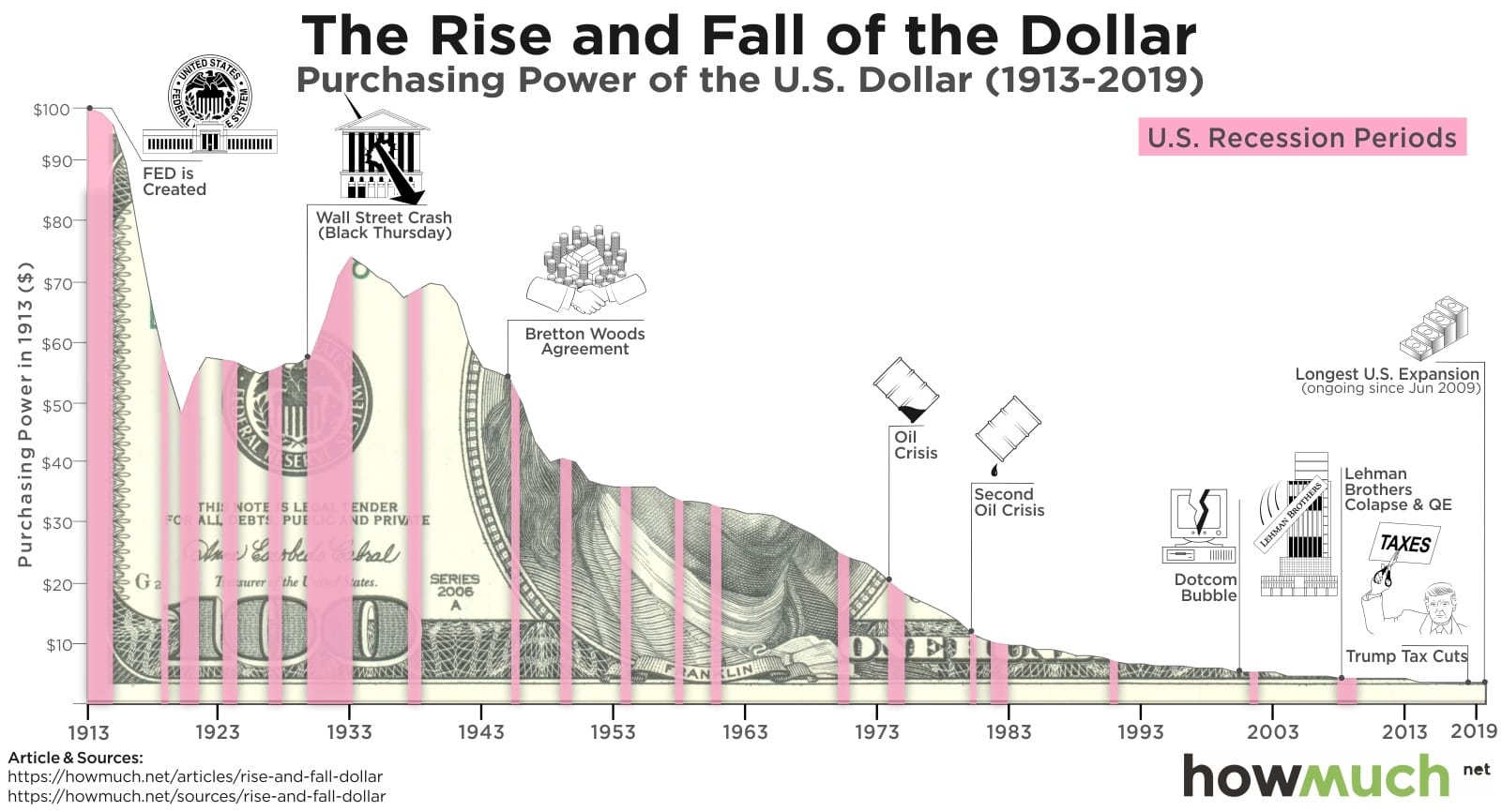
Notice that there are inflection points of decline in value of the US dollar through inflation.
- The first was the instantiation of the Federal Reserve Bank. When the graphic begins, it is unclear what happened before this from the graph, but the inflation rate was extremely high until around 1920. The US then went through a period of stability from 1920 until 1933.
- The second was from 1929 to 1933 where the US experienced deflation, which increased the dollar’s value. This is the depths of the great depression.
- The third was in 1943, the Bretton Woods Agreement. This is an agreement between the major countries to try to keep stability along with the various currencies. However, it immediately led to inflation and did not slow until around 1947.
- The fourth inflation was in 1971, which is when Nixon took the dollar off of the gold standard (that is, halted convertibility to gold). From 1921 to 1971, the dollar declined in value from around 55 cents (from the starting point in 1913) to around 25 cents. Since 1971, the decline has been from 25 cents to 3.5 cents. This drop from 1971 is enormous. 3.5/25 = .14. This means a dollar is worth 14% of what it was in 1971!
This supports the argument of those that opposed moving off of the gold standard. A fiat and unconnected currency appear to — in the case of the US — rapidly decline in value. It should be remembered that the US is supposedly about maintaining the stability of its money supply.
The Debasement of Fiat Currencies
This constant problem with fiat or virtual currencies (the US dollar or Euro being examples) is explained in the following quotation from the outstanding document on the topic written by the Bank of International Settlements.
“However, historical experience also made clear an underlying trade-off, for
currencies that are supplied flexibly can also be debased easily.7 Sustained episodes of stable money are historically much more of an exception than the norm. In fact, trust has failed so frequently that history is a graveyard of currencies. Museums around the world devote entire sections to this graveyard – for example, room 68 of the British Museum displays stones, shells, tobacco, countless coins and pieces of paper, along with many other objects that lost their acceptability as exchange and found their way to this room. Some fell victim to the expansion of trade and economic activity, as they were rendered inconvenient with a larger scale of use. Some were discarded when the political order that supported them weakened or fell. And many others fell victim to the erosion of trust in the stability of their value.” “Formal central banks, as we know them today, also often emerged in direct response to poor experiences with decentralised money. For example, the failures of wildcat banking in the United States eventually led to the creation of the Federal Reserve System.”“Digital information can be reproduced more easily than physical banknotes. For digital money, solving the double-spending problem requires, at a minimum, that someone keep a record of all transactions.
Prior to cryptocurrencies, the only solution was to have a centralised agent do this and verify all transactions.”
Blockchain-based permissionless cryptocurrencies have two groups of
participants: “miners” who act as bookkeepers and “users” who want to transact in the cryptocurrency. At face value, the idea underlying these cryptocurrencies is simple: instead of a bank centrally recording transactions (Graph V.3, left-hand panel), the ledger is updated by a miner and the update is subsequently stored by all users and miners (right-hand panel).18 – BIS
The High Overhead of Bitcoin
What is often left out of Bitcoin discussions is how much effort it is to manage and maintain. This is explained in exquisite detail in the following quotation.
Cryptocurrencies such as Bitcoin promise to deliver not only a convenient payment means based on digital technology, but also a novel model of trust. Yet delivering on this promise hinges on a set of assumptions: that honest miners control the vast majority of computing power, that users verify the history of all transactions and that the supply of the currency is predetermined by a protocol. Understanding these assumptions is important, for they give rise to two basic questions regarding the usefulness of cryptocurrencies. First, does this cumbersome way of trying to achieve trust come at the expense of efficiency? Second, can trust truly and always be achieved? Individual facilities operated by miners can host computing power equivalent to that of millions of personal computers. At the time of writing, the total electricity use of bitcoin mining equalled that of mid-sized economies such as Switzerland, and other cryptocurrencies also use ample electricity (Graph V.4, left-hand panel). Put in the simplest terms, the quest for decentralised trust has quickly become an environmental disaster.23 First, cryptocurrencies simply do not scale like sovereign moneys. At the most basic level, to live up to their promise of decentralised trust cryptocurrencies require each and every user to download and verify the history of all transactions ever made, including amount paid, payer, payee and other details. With every transaction adding a few hundred bytes, the ledger grows substantially over time. For example, at the time of writing, the Bitcoin blockchain was growing at around 50 GB per year and stood at roughly 170 GB. Thus, to keep the ledger’s size and the time needed to verify all transactions (which increases with block size) manageable, cryptocurrencies
have hard limits on the throughput of transactions (Graph V.4, centre panel). A thought experiment illustrates the inadequacy of cryptocurrencies as an
everyday means of payment (Graph V.4, right-hand panel). To process the number of digital retail transactions currently handled by selected national retail payment systems, even under optimistic assumptions, the size of the ledger would swell well beyond the storage capacity of a typical smartphone in a matter of days, beyond that of a typical personal computer in a matter of weeks and beyond that of servers in a matter of months. But the issue goes well beyond storage capacity, and extends to processing capacity: only supercomputers could keep up with verification of the incoming transactions. The associated communication volumes could bring the internet to a halt, as millions of users exchanged files on the order of magnitude of a terabyte. Another aspect of the scalability issue is that updating the ledger is subject to congestion. For example, in blockchain-based cryptocurrencies, in order to limit the number of transactions added to the ledger at any given point in time, new blocks
can only be added at pre-specified intervals. Once the number of incoming
transactions is such that newly added blocks are already at the maximum size
permitted by the protocol, the system congests and many transactions go into a
queue. With capacity capped, fees soar whenever transaction demand reaches the
capacity limit (Graph V.5). And transactions have at times remained in a queue for several hours, interrupting the payment process. This limits cryptocurrencies’
usefulness for day-to-day transactions such as paying for a coffee or a conference fee, not to mention for wholesale payments.24 Thus, the more people use a cryptocurrency, the more cumbersome payments become. This negates an essential property of present-day money: the more people use it, the stronger the incentive to use it. – BIS
And graphically, this is presented as follows.
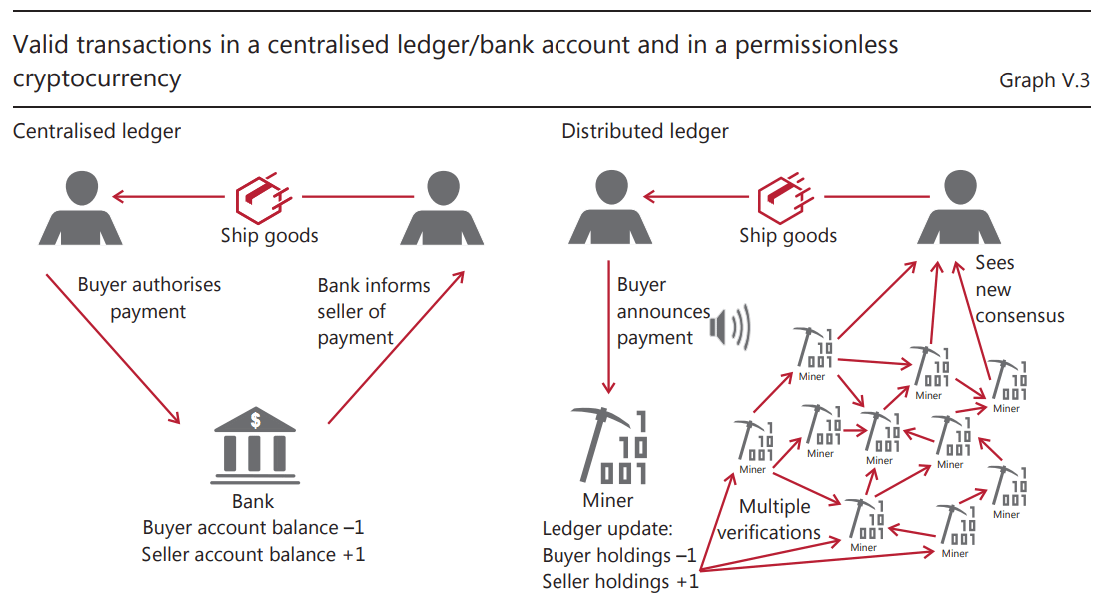
This is also explained in the following quotation.
“In mainstream payment systems, once an individual payment makes its way
through the national payment system and ultimately through the central bank
books, it cannot be revoked. In contrast, permissionless cryptocurrencies cannot
guarantee the finality of individual payments. One reason is that although users can verify that a specific transaction is included in a ledger, unbeknownst to them there can be rival versions of the ledger. This can result in transaction rollbacks, for example when two miners update the ledger almost simultaneously.”Not only is the trust in individual payments uncertain, but the underpinning of trust in each cryptocurrency is also fragile. This is due to “forking”. This is a process whereby a subset of cryptocurrency holders coordinate on using a new version of the ledger and protocol, while others stick to the original one. In this way, a cryptocurrency can split into two subnetworks of users. While there are many recent examples, an episode on 11 March 2013 is noteworthy because – counter to the idea of achieving trust by decentralised means – it was undone by centralised coordination of the miners. On that day, an erroneous software update led to incompatibilities between one part of the Bitcoin network mining on the legacy protocol and another part mining using an updated one. For several hours, two separate blockchains grew; once news of this fork spread, the price of bitcoin tumbled by almost a third (Graph V.7, right-hand panel). The fork was ultimately rolled back by a coordinated effort whereby miners temporarily departed from protocol and ignored the longest chain. But many transactions were voided hours after users had believed them to be final. This episode shows just how easily cryptocurrencies can split, leading to significant valuation losses” ” – BIS
This is what leads it to be so amazingly energy consumptive.
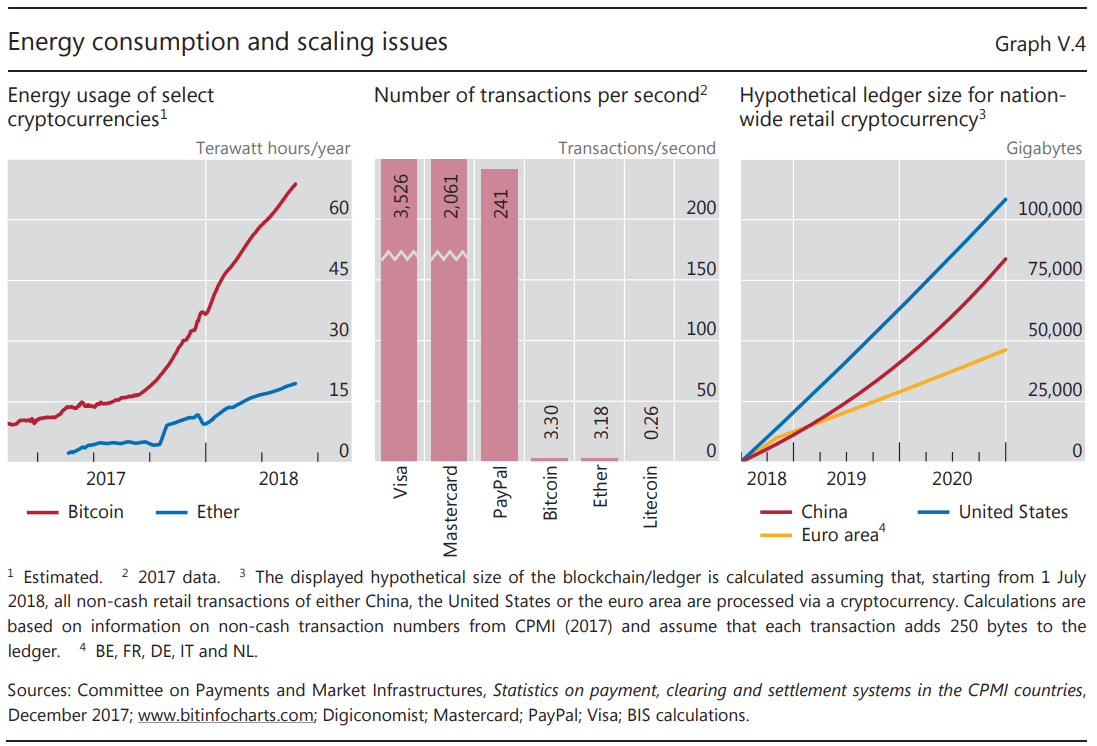
This high energy consumption, combined with Elon Musk’s investment of $1.5 billion, brought some criticism of Musk, as is expressed in the following quotation.
Soon after news broke of the report, which also states that Tesla anticipates accepting Bitcoin as a form of payment “in the near future,” social media users criticized Musk for what they called an environmentally dangerous move from the usually conservation-minded electric car company CEO.
On Twitter, Menor posted some interesting statistics regarding Bitcoin’s energy use. He noted that a single Bitcoin transaction “wastes” roughly 741 kilowatt-hours of energy, while a Tesla Model 3 Long Range electric car uses 16 kWh to travel 100 km before it needs to be recharged.
Breaking down the math further, Menor wrote: “Buy one [Model 3] with Bitcoin and you’ve immediately wasted almost 5,000 km (more than 3,000 miles) worth of driving just on the transaction alone.” He ended his tweet with “Genius @elonmusk.”
The graphic comes from research by Shanhong Liu, an expert on tech trends and the global software industry. Liu’s research compared the average energy consumption for one Bitcoin transaction in 2020 to the energy consumption involved with a cumulative number of Visa transactions. According to Liu, one single Bitcoin transaction used 741 kilowatt-hours, which was substantially higher than that of 100,000 Visa transactions, which totaled 149 kilowatt-hours. – MSN
Musk’s investment in Bitcoin indicates what I suspected for some time — that Elon Musk is just using faux environmentalism to make money and does not care about a green future. And Tesla’s cars are not particularly more green than internal combustion engines once the total math of energy usage — including the production of large quantities of lithium batteries for the Tesla car is included. It is amusing that Tesla may make more from their investment in Bitcoin than from their car operations.
“To put this in perspective, Tesla is on a trajectory to make more from its Bitcoin investments than profits from selling its [electric vehicle] cars in all of 2020,” Wedbush Securities analyst Daniel Ives wrote in a research note on the company’s foray into crypto. – New York Post
The following graphic shows how Bitcoin differs in organization from traditional banking.
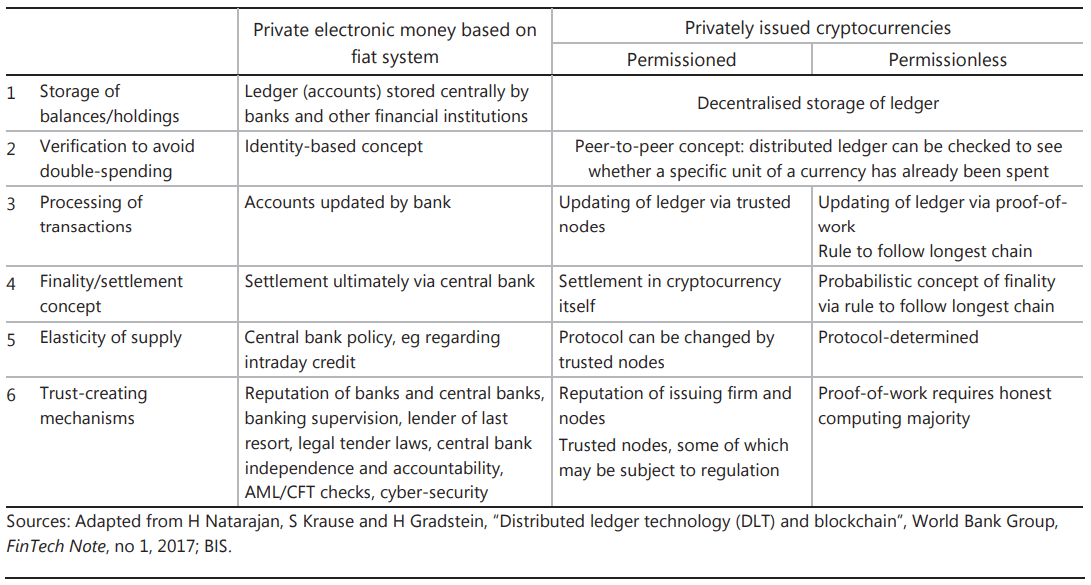
Regulations of Bitcoin
The constant fear of the Bitcoin industry is that governments will close down Bitcoin. One way of doing this is by restricting Bitcoin entities from having bank accounts. This issue is expressed in the following quotation.
According to Mark T. Williams, as of 30 September 2014, bitcoin has volatility seven times greater than gold, eight times greater than the S&P 500, and 18 times greater than the US dollar.[198] Hodl is a meme created in reference to holding (as opposed to selling) during periods of volatility. Unusual for an asset, bitcoin weekend trading during December 2020 was higher than for weekdays.[199] Hedge funds (using high leverage and derivates)[200] have attempted to use the volatility to profit from downward price movements. At the end of January 2021, such positions were over $1 billion, their highest of all time.[201][202] As of 8 February 2021, the closing price of bitcoin equals US$44,797.[203]
The Bank for International Settlements summarized several criticisms of bitcoin in Chapter V of their 2018 annual report. The criticisms include the lack of stability in bitcoin’s price, the high energy consumption, high and variable transactions costs, the poor security and fraud at cryptocurrency exchanges, vulnerability to debasement (from forking), and the influence of miners. – Wikipedia
Important Features of Bitcoin
Bitcoin’s recent rise was very strongly related to Elon Musk’s endorsement. However, this endorsement was designed to increase the price of Bitcoin as Elon Musk had taken a position in Bitcoin.
On 19 January 2021 Elon Musk placed #Bitcoin in his Twitter profile tweeting “In retrospect, it was inevitable”, which caused the price to briefly rise about $5000 in an hour to $37,299.[87] On 25 January 2021 Microstrategy announced it continued to buy bitcoin and as of the same date it had holdings of ₿70,784 worth $2.38 billion.[88] On 8 February 2021 Tesla’s announcement that it had purchased $1.5 billion in bitcoin and planned to start accepting bitcoin as payment for vehicles pushed the bitcoin price to an all time high of $44,141.[89] On 18 February 2021, Elon Musk said that “owning bitcoin was only a little better than holding conventional cash, but that the slight difference made it a better asset to hold”. – Wikipedia
The Lack of Support for Bitcoin Among Establishment Commentators
This is expressed in the following quotation.
Bitcoin, along with other cryptocurrencies, has been described as an economic bubble by at least eight Nobel Memorial Prize in Economic Sciences laureates at various times, including Robert Shiller on 1 March 2014,[168] Joseph Stiglitz on 29 November 2017,[231] and Richard Thaler on 21 December 2017.[232][233] On 29 January 2018, a noted Keynesian economist Paul Krugman has described bitcoin as “a bubble wrapped in techno-mysticism inside a cocoon of libertarian ideology”,[159] on 2 February 2018, professor Nouriel Roubini of New York University has called bitcoin the “mother of all bubbles”,[234] and on 27 April 2018, a University of Chicago economist James Heckman has compared it to the 17th-century tulip mania. – Wikipedia
Steve Keen on Bitcoin
Non-mainstream economist Steve Keen explains why those that support Bitcoin are trying to do something that has never been done before.
Keen observes the following about Bitcoin:
- Energy consumption levels on both mining and transactions are extremely high.
- Bitcoin cannot be compared to gold – even though it is routinely compared to gold by Bitcoin enthusiasts.
- The relative price of assets versus Bitcoin is there is a disincentive to use it. To use Bitcoin for transactions, it needs to stop rising.
- Bitcoin advocates propose that Bitcoin is better than government money.
- Bitcoin advocates promote the idea that Bitcoin is like gold, however, gold was only used when faith in a king fell apart. The total amount of gold in the world is something around two swimming pools.
- The fact that Bitcoin has to be purchased with a fiat currency is a problem.
- Bitcoin was in a large bubble back when Bitcoin was at $8,000 back in 2017. In April 2021 Bitcoin is over $60,000.
- The fundamental use of Bitcoin is to use at transactions. And this would be a lot less than $8,000.
- Keen sees cryptocurrencies as a potential alternative to money, however, he does not think that Bitcoin is designed this way. Secondly, Keen thinks that the design of Bitcoin where after a certain point no new Bitcoins can be created is based upon a mainstream economist’s assumption that the primary weakness of any money is hyperinflation.
- Keen quotes Hyman Minsky who stated..
Its easy to create a currency, it is difficult to get a currency accepted.
Many of the questions posed to Steve Keen in this video indicates that there is a great deal of projection on Bitcoin rather than thinking through what Keen presented to the audience.
A very interesting comment on this video is the following.
Crytocurrencies are commodities. They aren’t monetary instruments. They can’t be redeemed by anyone.
If that is true, it entirely undermines the argument for both Bitcoin and other cryptocurrencies.
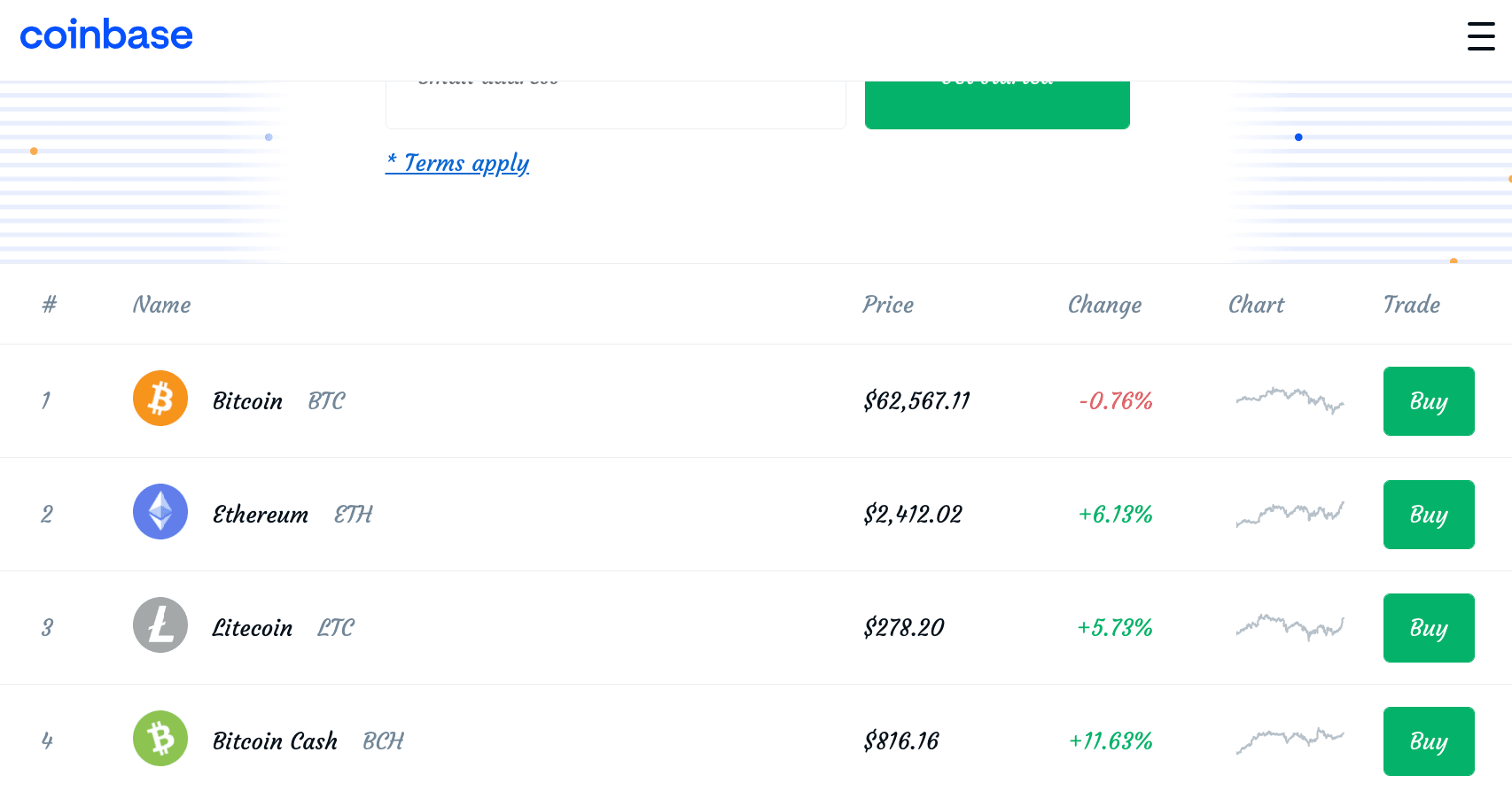
Coinbase is where one can go to buy cryptocurrencies.
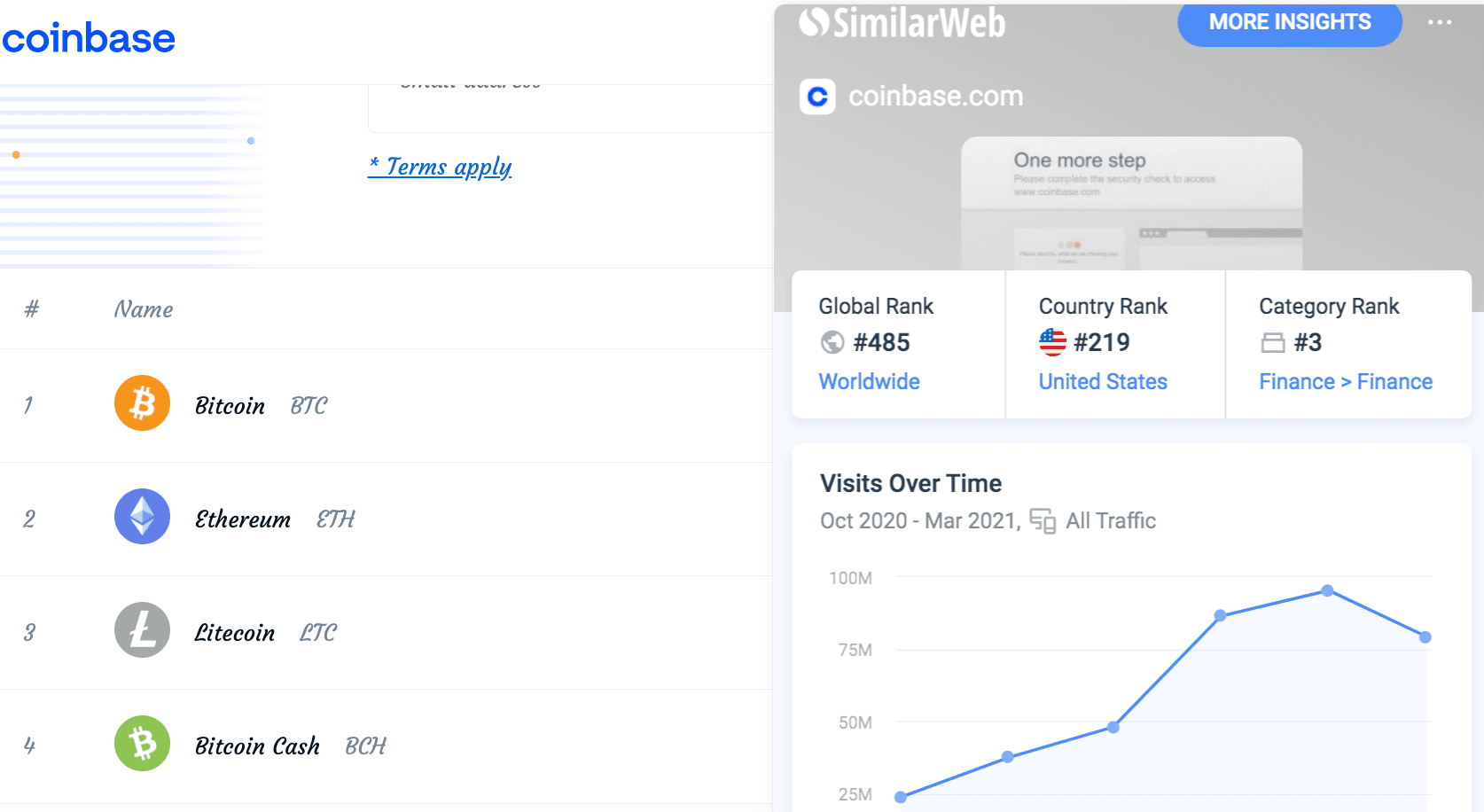
The interest in Coinbase has increased dramatically in just a few months.
Conclusion
Bitcoin is complicated to understand. For as long as anyone can remember, the currency has been controlled by banks and governments. And now Bitcoin advocates come by and say that one can use Bitcoin as a replacement. However, it is also true that currency has nothing supporting it but believes it has value. If enough people believe Bitcoin has value, then it will have value.
Currently, Bitcoin is more of a store of value than used to pay for things, but this is changing. The fact is that all currencies are a type of imaginary value. The money that you have “in the bank” is not really in the bank. Only a small fraction of your bank account balance is kept in physical reserves at the bank. The more one thinks about currencies. The more apparent assumptions are made daily about currencies that are not true.
However, those covering Bitcoin are not getting into enough detail on the topic because the work done by the BIS surfaced some serious issues that are not covered in articles I found on Bitcoin.
Secondly, it is clear that some Bitcoin enthusiasts are bringing up legitimate criticism of money, but many of these criticisms apply to private central banks. The effort should be in moving from private central banks to governments taking control over money creation.
Creating a parallel system for payment processing and banking is a major undertaking. Bitcoin is, much like Tesla, benefiting from not having to scale and being more of a curiosity. None of this is to detract from the very valid criticisms that Bitcoin advocates have of the banking system, payment processors, credit cards, and central banks. There are many valid criticisms of the current private banking-based banking system.